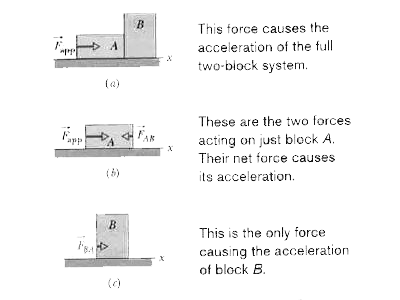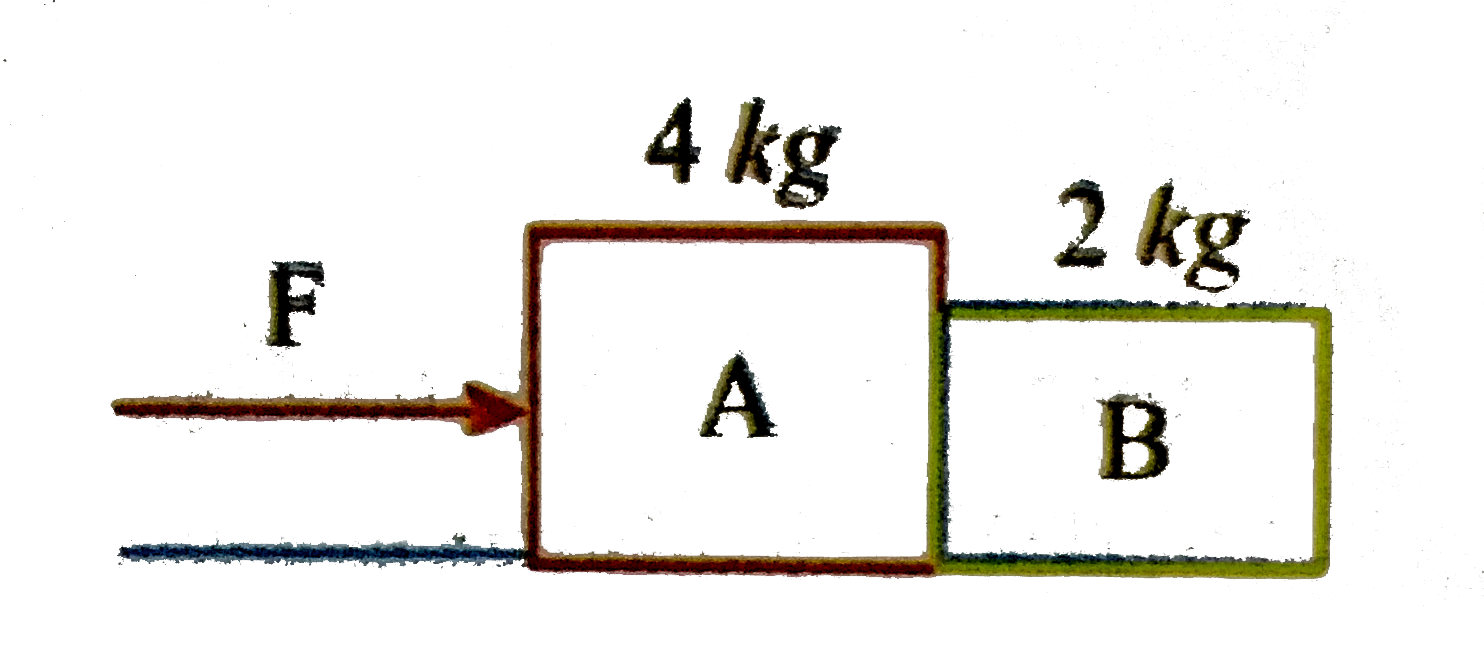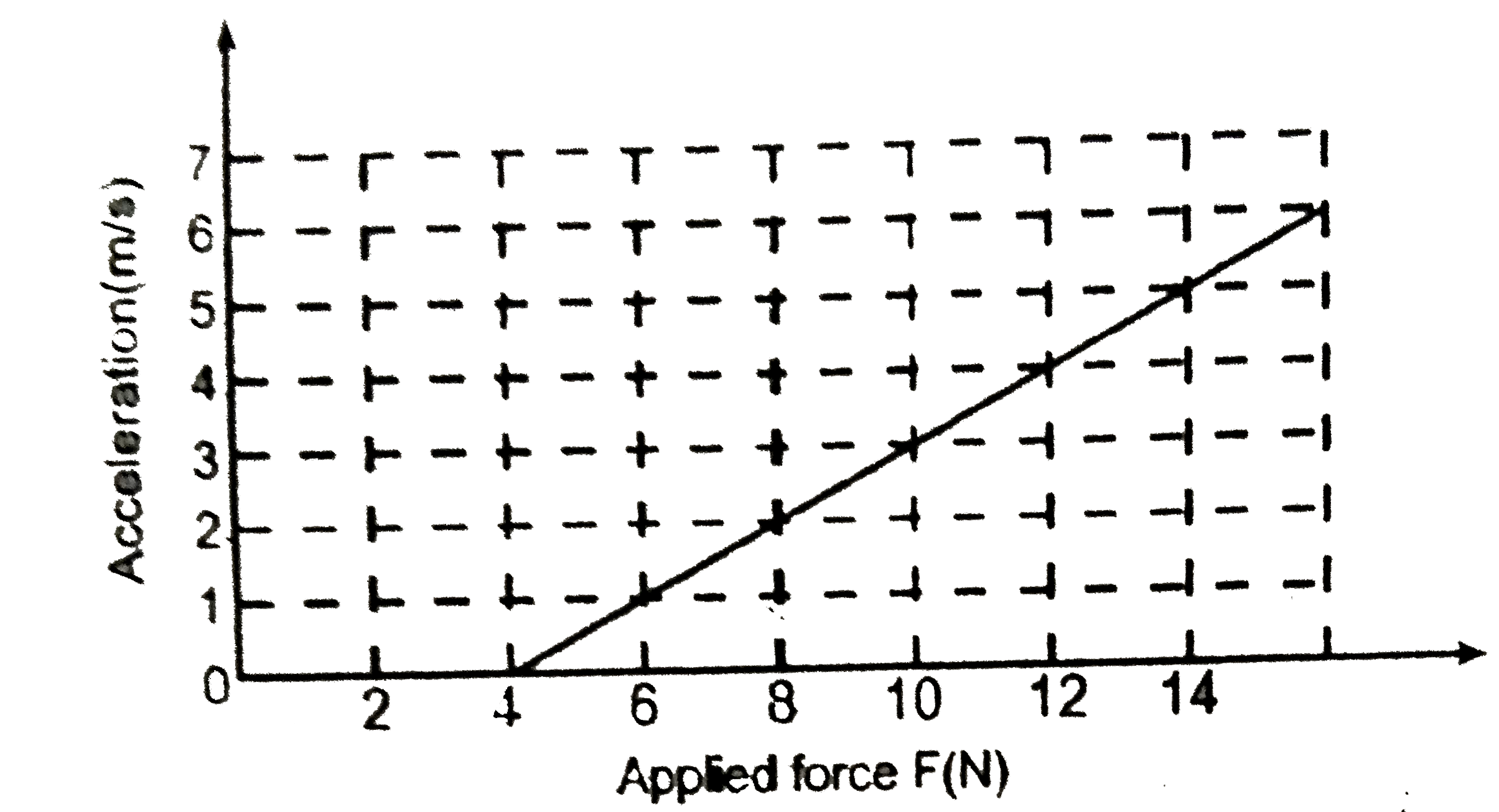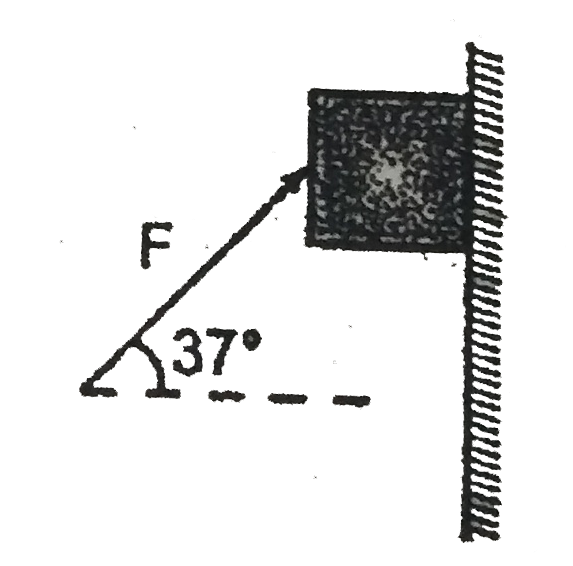In Fig. 5-54a, a constant horizontal force →Fa is applied to block A, which pushes against block B with a 15.0 N force directed horizontally to the right. In Fig. 5-54b, the same force →Fa is applied to block B, now block A pushes on block B with a 10.0 N force directed horizontally to the left. The blocks have a combined mass of 12.0 kg. What are the magnitudes of (a) their acceleration in Fig. 5-54a and (b) force →Fa ?

(a) 2.08 m/s2, (b) 25.0 N
Topper's Solved these Questions
- BOOK - RESNICK AND HALLIDAYCHAPTER - FORCE AND MOTION - I EXERCISE - PRACTICE QUESTIONS (Single Correct Choice Type)36videos
FORCE AND MOTION - I
- BOOK - RESNICK AND HALLIDAYCHAPTER - FORCE AND MOTION - I EXERCISE - PRACTICE QUESTIONS (More than One Correct Choice Type)5videos
FORCE AND MOTION - I
- BOOK - RESNICK AND HALLIDAYCHAPTER - FORCE AND MOTION - I EXERCISE - CHECKPOINT5videos
FORCE AND MOTION - I
- BOOK - RESNICK AND HALLIDAYCHAPTER - FLUIDSEXERCISE - PRACTICE QUESTIONS (Integer Type )5videos
FLUIDS
- BOOK - RESNICK AND HALLIDAYCHAPTER - FORCE AND MOTION-IIEXERCISE - PRACTICE QUESTIONS (Integer Type)1videos
FORCE AND MOTION-II
Similar Questions
In Fig. 5-26a, a constant horizontal force →Fapp of magnitude 20 N is applied to block A of mass mA=4.0 kg, which pushes against block B of mass mB=6.0 kg. The blocks slide over a frictionless surface, along an x axis.
(a) What is the acceleration of the blocks ?
Serious Error: Because force Fapp is applied directly to block A, we use Newton's second law to relate that force to the acceleration →a of block A. because the motion is along the x axis, we use that law for x components (Fnet, x=max), writing it as
Fapp=mAα.
However, this is seriously wrong because →Fapp is not the only horizontal force acting on block A. There is also the force →FAD from block B (Fig. 5-26b).
Dead-End Solution: Let us now include force →FAB by writing, again for the x axis,
Fapp−FAB=mAα.

Figure 5-26 (a) A constant horizontal force →Fapp is applied to block A, which pushes against block B. (b) Two horizontal forces act on block A. (c) Only one horizontal force acts on block B.
(We use the minus sign to include the direction of →FAB.) Because FAB is a second unkon, we cannot solve this equation for a.
Successful Solution: Because of the direction in which force →Fapp is applied, the two blocks form a rigidly connected system. We can relate the net force on the system to the acceleration of the system with Newton's second law. Here, once again for the x axis, we can write that law as
Fapp=(mA+mB)α,
where now we properly apply →Fapp to the system with total mass mA+mB. Solving for a and substituting known values, we find
a=FappmA+mB=20 N)4.0 kg+6.0 kg)=2.0 m/s2.
Thus, the acceleration of the system and of each block is in the positive direction of the x axis and has the magnitude 2.0 m/s2.
(b) What is the (horizontal) force →FBA on block B from block A (Fig. 5-26c) ?View SolutionA shown in Fig. two blocks are placed in contact on a smooth table. A horizontal force of 6 N is applied on 20 kg block. (i) With what force does the block press the 10 kg block ? (ii) If the same force is applied on 10 kg block, with what force will the 20 kg block press the 10 kg block ?
 View Solution
View Solution
Knowledge Check
- Question 1 - Select One
A horizontal force F pushes a 4 kg block (A) which pushes against a 2 kg block (B) as shown. The blocks have an acceleration of 3m/s2 to the right. There is no friction between the blocks and the surfaces on which they slide. What is the net force B exerts on A ?
 A6N to the rightB12 N to the rightC6 N to the leftD12 N to the left
A6N to the rightB12 N to the rightC6 N to the leftD12 N to the left - Question 2 - Select One
A horizontal force F pushes a 4kg block (A) which pushes against a 2kg block (B) as shown The have an acceleration of 3m/s2 to the right There is no friction between the blocks and the surface on which they slide. What is the net force B exerts on A
 .A6N to the rightB12N to the rightC6N to the leftD12N to the left
.A6N to the rightB12N to the rightC6N to the leftD12N to the left - Question 3 - Select One
A horizontal force F pushes a 4kg block (A) which pushes against a 2kg block (B) as shown The have an acceleration of 3m/s2 to the right There is no friction between the blocks and the surface on which they slide. What is the net force B exerts on A
 .A6 N to the rightB12 N to the rightC6 N to the leftD12 N to the left
.A6 N to the rightB12 N to the rightC6 N to the leftD12 N to the left
A block with a weight of 4.0 N is at rest on a horizontal surface A 1.0 N upward force is applied to the block by means of an attached vertical string. What are the (a) magnitude and (b) direction of the force of the block on the horizontal surface ?
View SolutionAcross a horizontal floor, a 102 kg block is pulled at a constant speed of 5.5 m/s by an applied force of 125 N directed 38∘ above the horizontal. Calculate the rate at which the force does work on the block.
View SolutionA block (A) of mass 3 kg in contact with a second block (B) of mass 2 kg rests on a frictionless horizontal surface. A horizontal force of 20 N is applied to push the block A. What is the force with which the block A pushes the block B?
View SolutionA block of unknown mass is at rest on a rough, horizontal surface. A horizontal force F is applied to the block. The graph in the figure shows the acceleration of the block with respect to the applied force. The mass of the block is
 View Solution
View SolutionA 1 kg block is being pushed against a wall by a force F=75N as shown in the figure. The coefficient of friction is 0.25. The magnitude of acceleration of the block is:
 View Solution
View Solution

